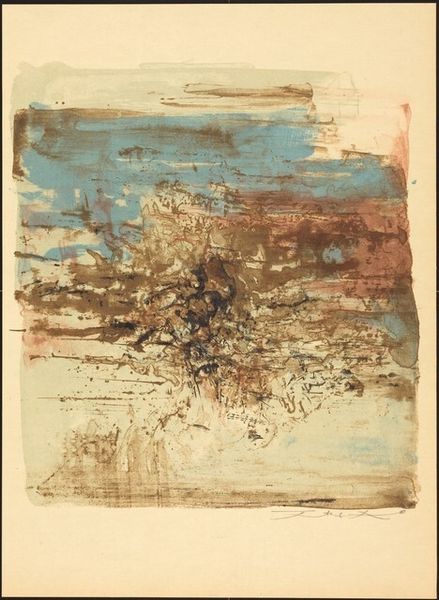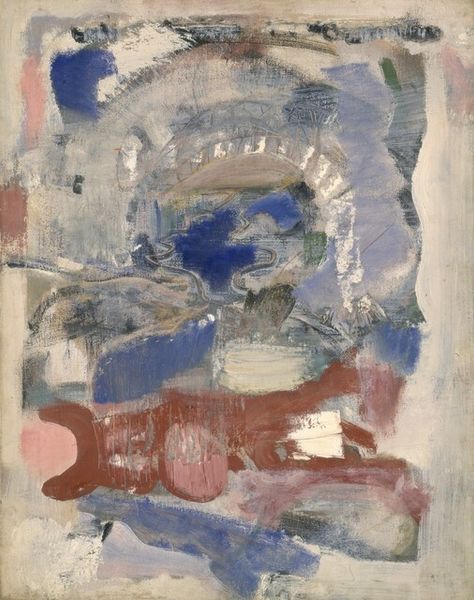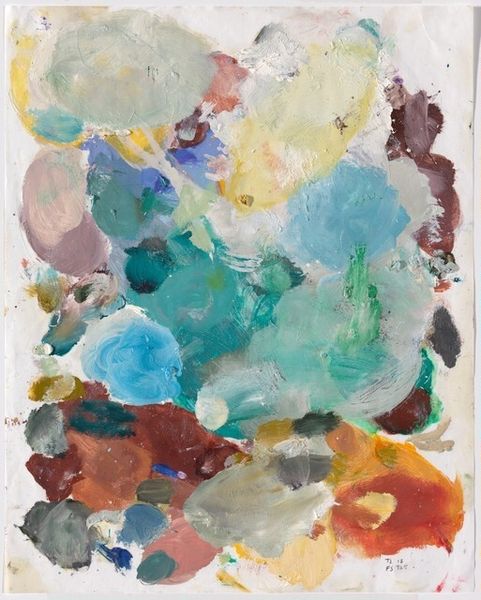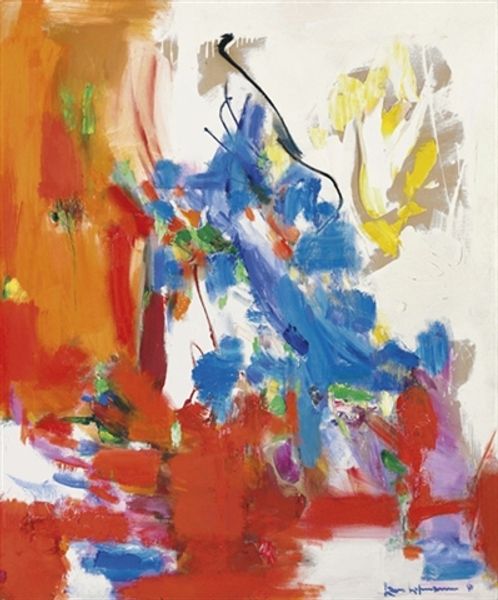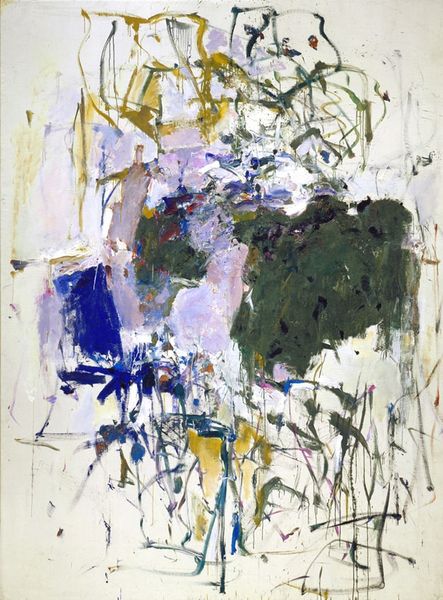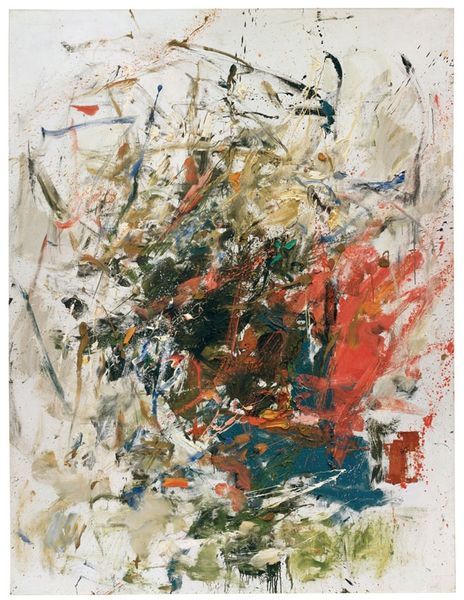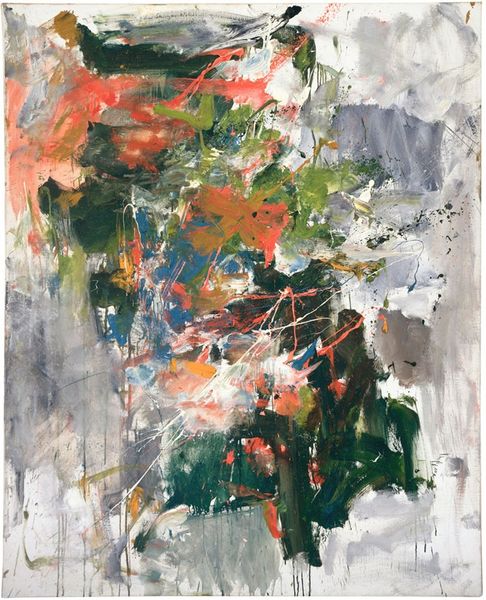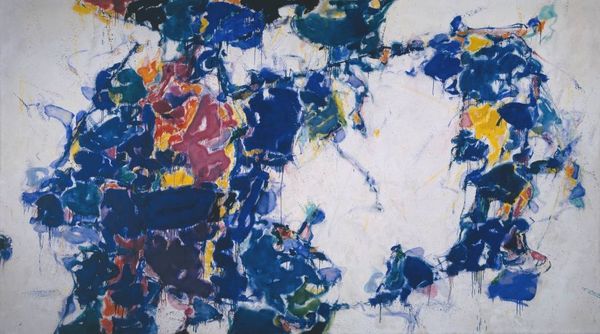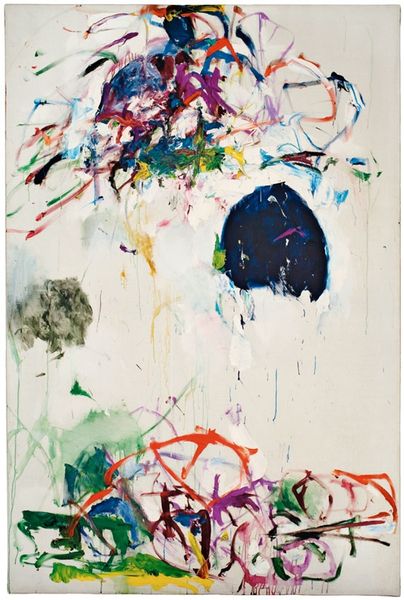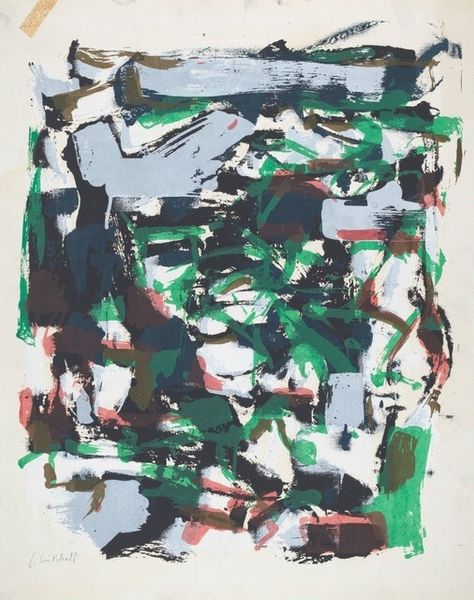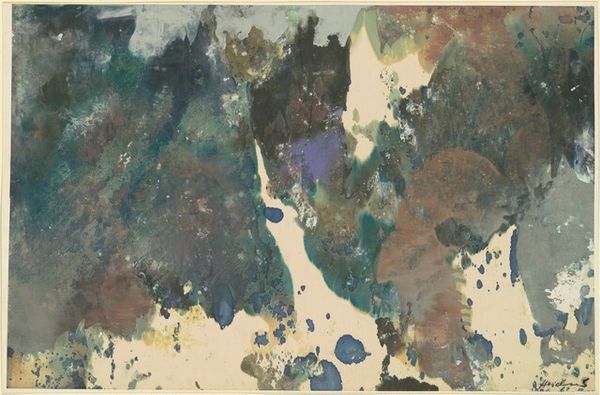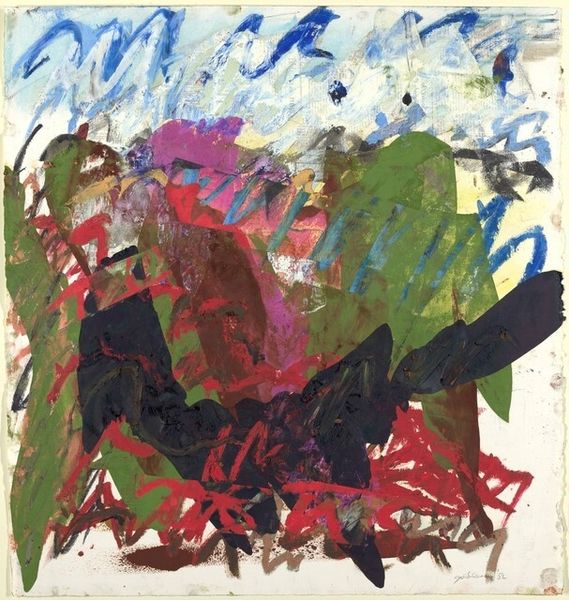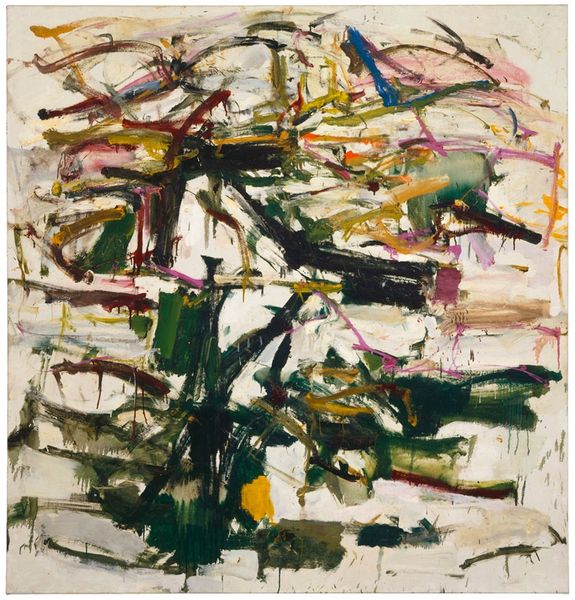
painting, acrylic-paint
#
abstract-expressionism
#
abstract expressionism
#
non-objective-art
#
painting
#
landscape
#
acrylic-paint
#
abstraction
#
allover-painting
#
modernism
Copyright: John Ferren,Fair Use
Curator: We are looking at “Outdoors,” an acrylic on canvas work by John Ferren, created in 1952. Editor: Well, immediately, I’m struck by the tension between chaos and control. It's both explosive and contained. Curator: Precisely. Ferren was deeply invested in the formal elements of painting, specifically exploring how color relationships generate visual and, indeed, emotional impact. Notice how he uses layered fields of color and then disrupts it with drips and stark linear elements. Editor: And the dripped paint, for me, acts as these sort of primal rivulets, drawing a direct connection to the raw, untamed power we often associate with the natural world. The patches of blue and green... the earthen tones. Does he attempt to evoke an unrecoverable history of the Earth? Curator: He certainly presents us with a tension. While considered abstract-expressionist, this particular piece rejects any gestural or personal mark making we find in some of his contemporaries. He’s channeling nature, as the title implies, but almost from a structural remove. We might even read semiotic references, where the blue represents water, green represents foliage. Editor: I wonder then... if the symbolic language points to something deeper. I'm drawn to this image's almost subterranean quality; a reminder of both nature’s capacity to create and destroy. I consider that his abstract-expressionist period coincides with the cold war—the image seems to hold a heavy symbolic weight regarding collective fear and nature as indifferent force. Curator: Yes! Ferren's “allover” composition resists a traditional focal point, a key element of post-war painting as it moves away from a pre-war center, favoring dispersal and decenteredness. His strategic deployment of white as a background, the color of possibility, adds a further layer to the painting’s overall impact. Editor: Ultimately, I see an emotional map of nature. Not one tied to realistic depictions, but rather one charged with cultural significance. Thanks to his painting, Ferren reminds us of our inseparable and historically complex relationship with it. Curator: Agreed, seeing it again, his balance of calculation and spontaneity truly reveals a profound statement about the power and the paradoxes of our natural world.
Comments
No comments
Be the first to comment and join the conversation on the ultimate creative platform.
